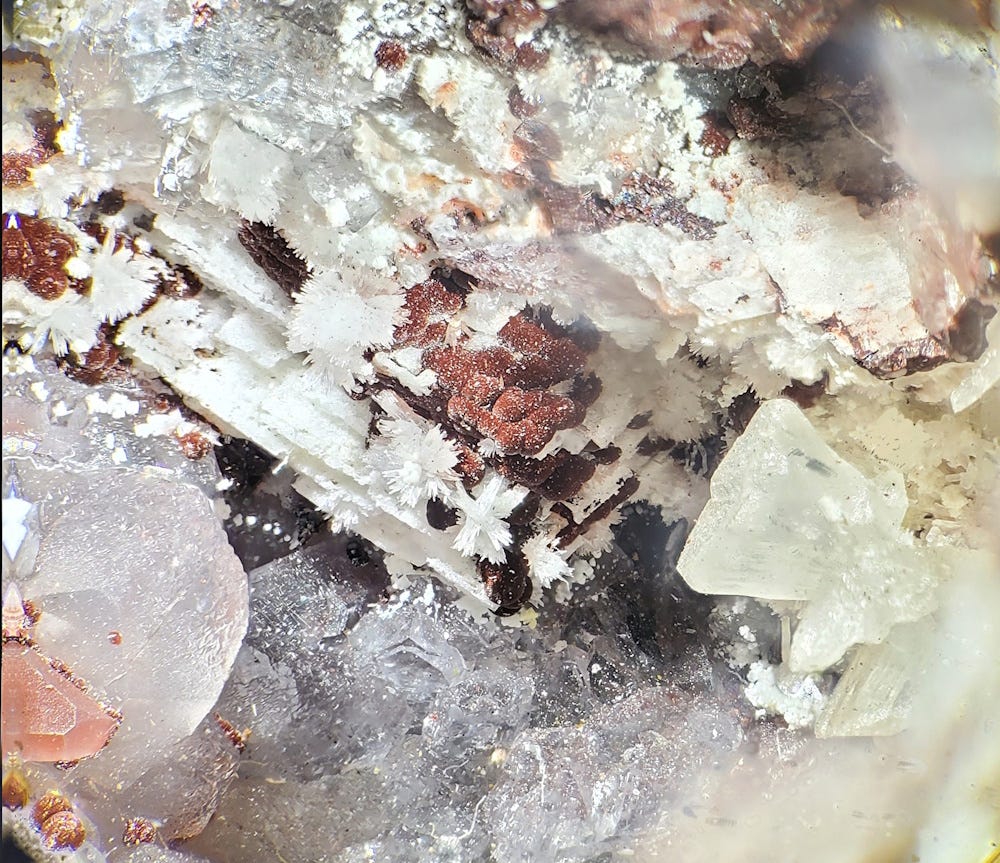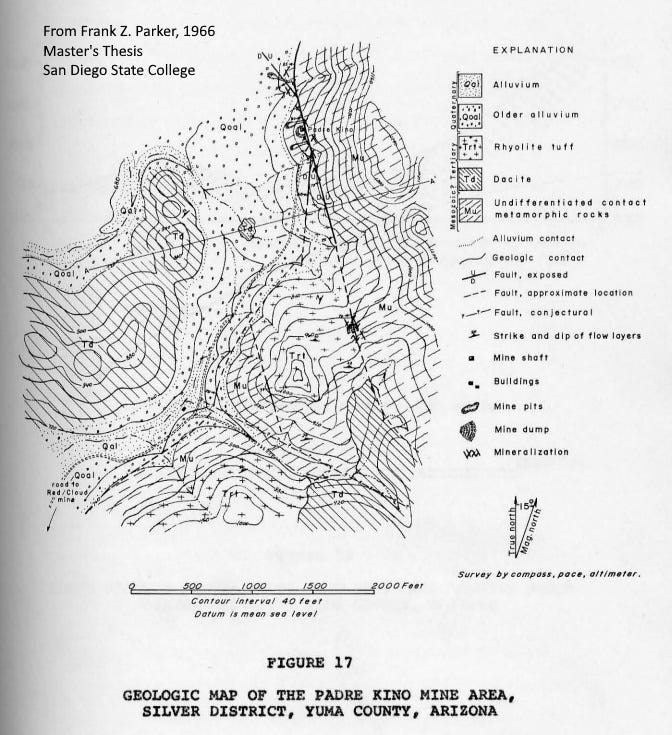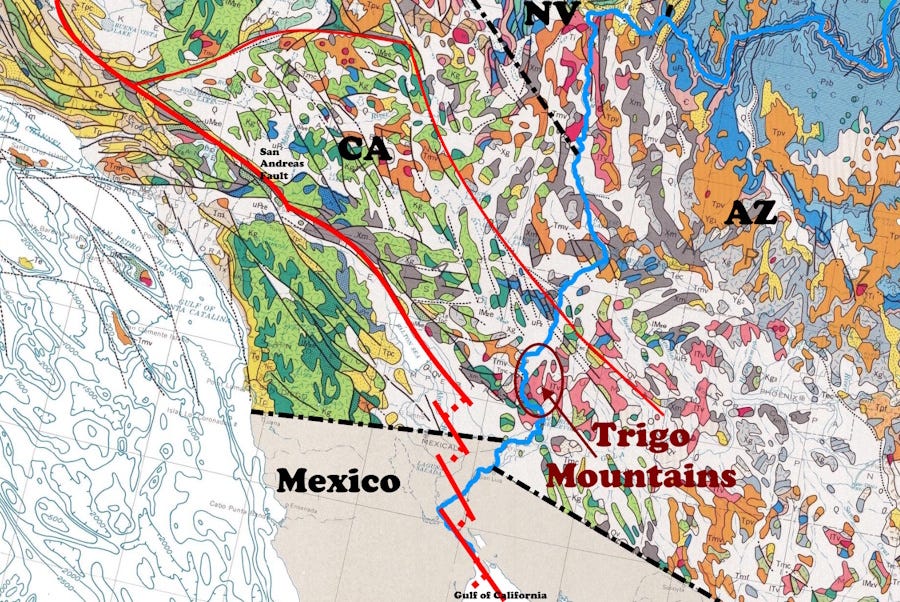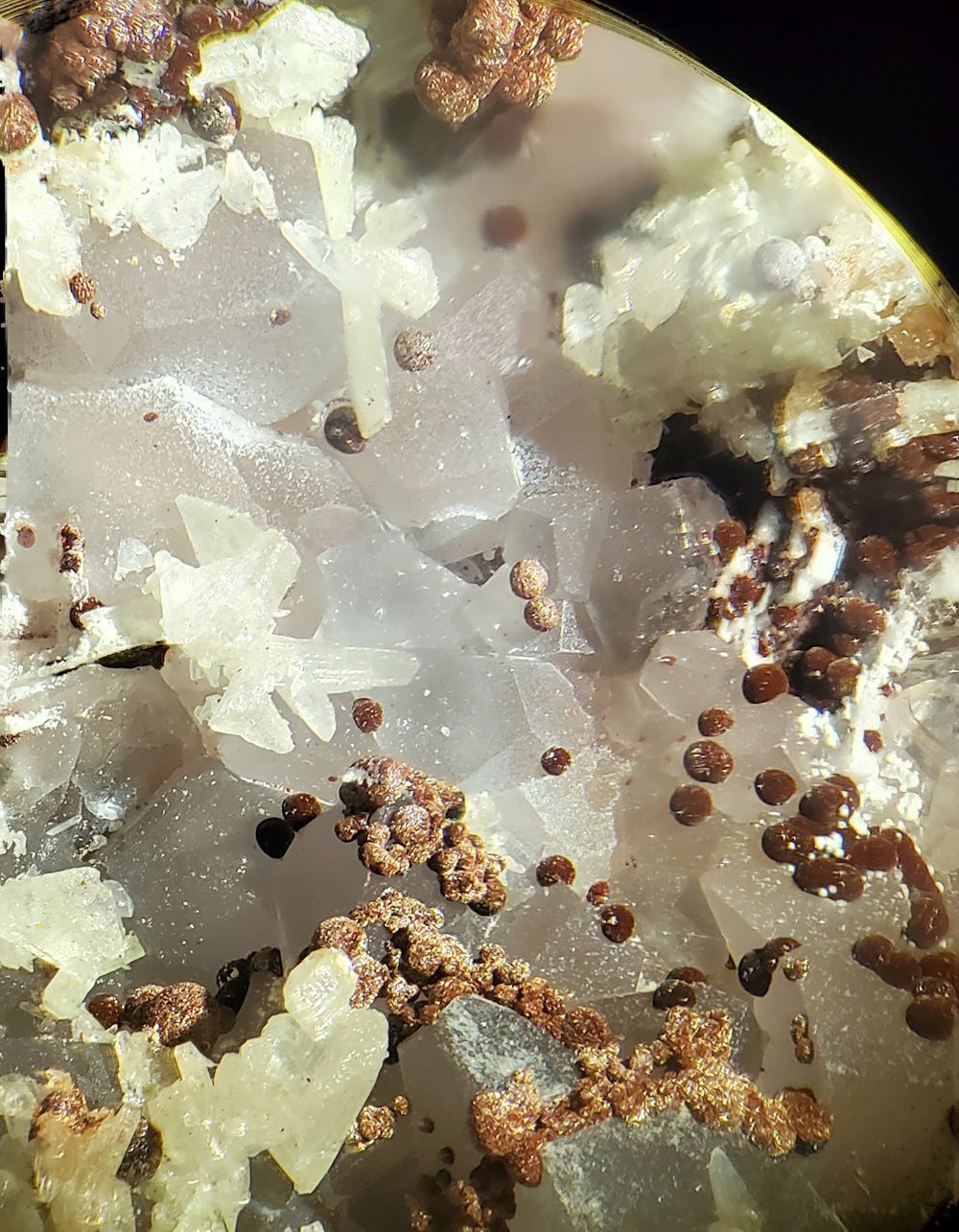
Life in the USA is not normal. It feels pointless and trivial to be talking about small looks at the fascinating natural world when the country is being dismantled. But these posts will continue, as a statement of resistance. I hope you continue to enjoy and learn from them. Stand Up For Science!
There are two Dives Mines in Arizona; this one is in La Paz County, in the Trigo Mountains near the Colorado River. It was established mostly as a silver mine, but it also at least potentially exploited lead, zinc, iron, manganese, strontium, and barium, but little total production was recorded – only a couple train car loads of high-grade silver ore, about 1920.

The mineralization appears to be along a normal fault zone that juxtaposes Tertiary volcanic rocks including lava flows and tuffs (ash falls) against intensely metamorphosed sedimentary rocks whose age seems to be uncertain (probably Mesozoic, but possibly Precambrian). The volcanic rocks are mostly andesitic in composition (intermediate between granite and basalt) and the metasediments are reported (Parker, 1966, The geology and mineral deposits of the Silver District, Trigo Mountains, Yuma County, Arizona: Master’s thesis, San Diego State College) to be high-grade migmatite (almost melted or partially melted rocks), gneiss, schist, and amphibolite. All that seems unlikely to have been produced by the volcanic rocks (they would not be hot enough for long enough), and I speculate that the likely source of the metamorphism is a large granitic body (probably Cretaceous in age) that crops out within about a half mile.
The fault itself is probably related to the Tertiary (65 to 2 million years ago) basin-and-range extension that is best developed in Nevada and western Utah, but southwestern Arizona is part of the Basin and Range Province too. Although there are probably larger faults that control the Trigo Mountain Range overall, the faults exposed in the mountains only have a few hundred feet of offset. Nonetheless they appear to have served as conduits for the fluids that carried the silver-lead-zinc and other mineralization.

The faulting is complicated by activity in the past 4-10 million years or so along what is now the San Andreas Fault, whose transition to the rift system in the Gulf of California is within about 200 km of the Trigo Mountains (Dorsey and others, 2021, Tectonostratigraphic record of late Miocene–early Pliocene transtensional faulting in the Eastern California shear zone, southwestern USA: Geosphere v. 17). Some of the earlier faulting was probably low-angle detachments sliding off the uprising Trigo Mountains, but oblique wrenching related to the San Andreas modified that tectonic activity somewhat. Whether the mineralization at the Dives Mine is related to the younger faulting is something I have not discovered, but I’d guess it is mostly related to the Cretaceous granite and older faulting.

My photos show complexly twinned yellowish-white crystals of cerussite (lead carbonate) and white radiating flower-like sprays of willemite (zinc silicate) on a substrate of calcite crystals with velvety balls of brown goethite (iron hydroxide oxide) on top of everything making for a nice contrast. As is often the case with willemite, these crystals are fluorescent a slightly greenish blue.
The Red Cloud Mine, famous for some of the best, reddest wulfenite (lead molybdate) crystals in the world (prices well into four figures are common), is about a mile southwest of the Dives Mine area. Decent wulfenite is known from the Dives Mine, too, but there’s none in my specimens.
Willemite, zinc silicate, was named for King Willem (William) I of The Netherlands in 1830. Cerussite is from Latin cerussa, meaning "white lead."



